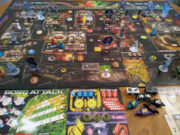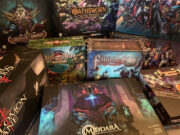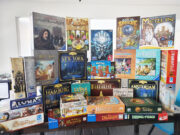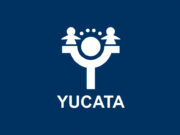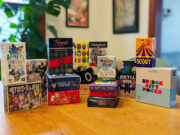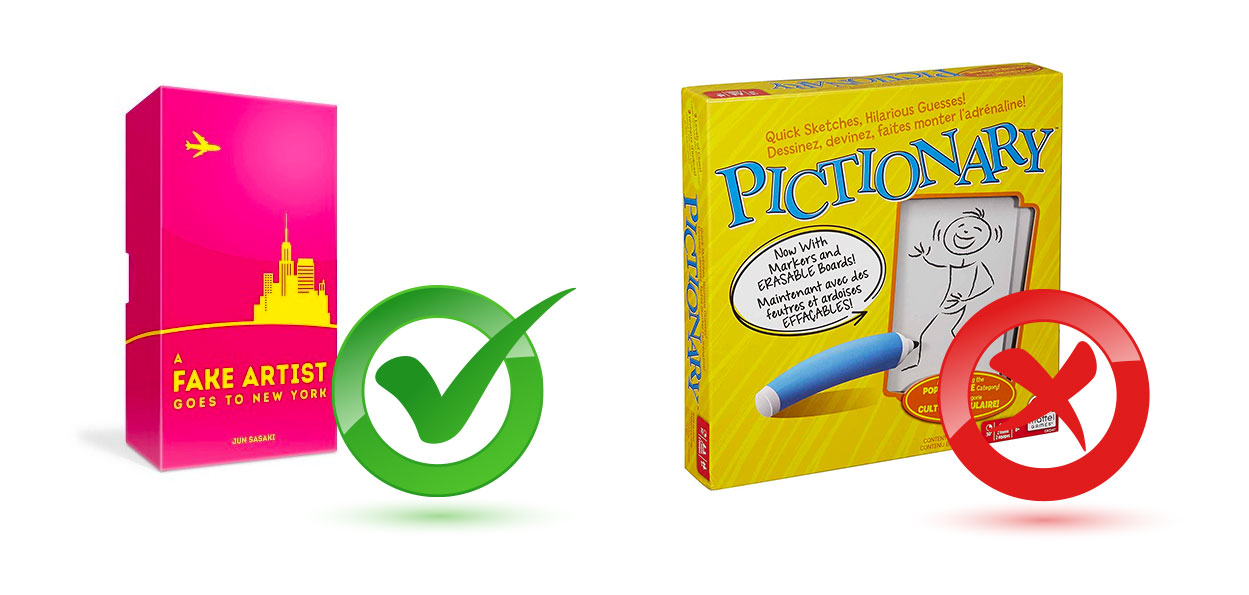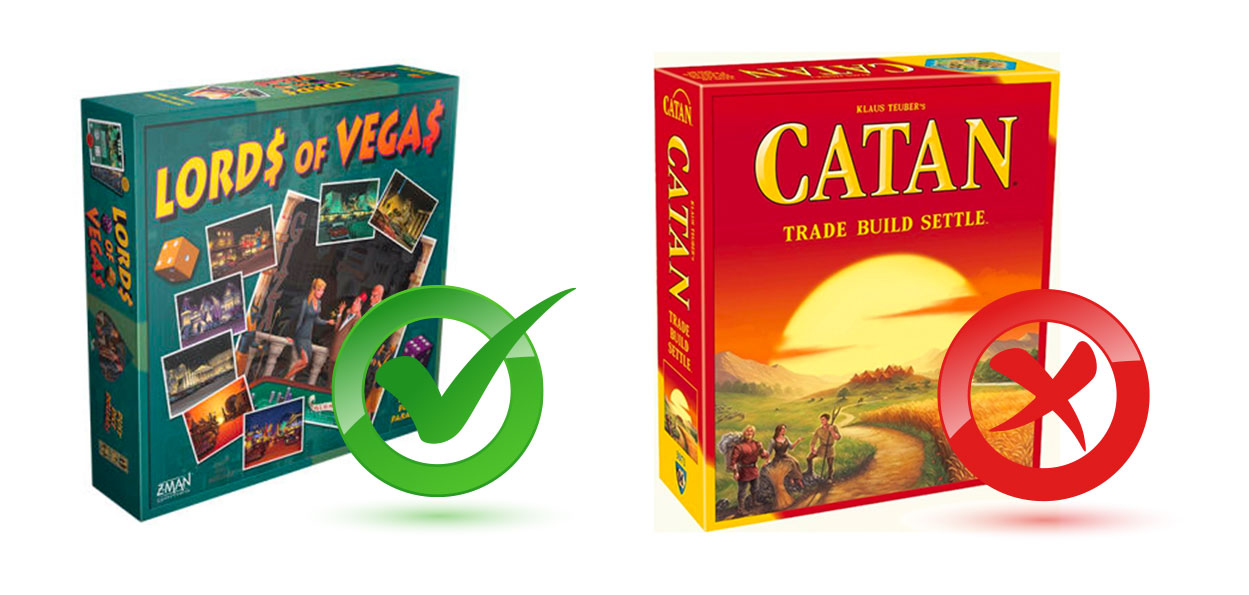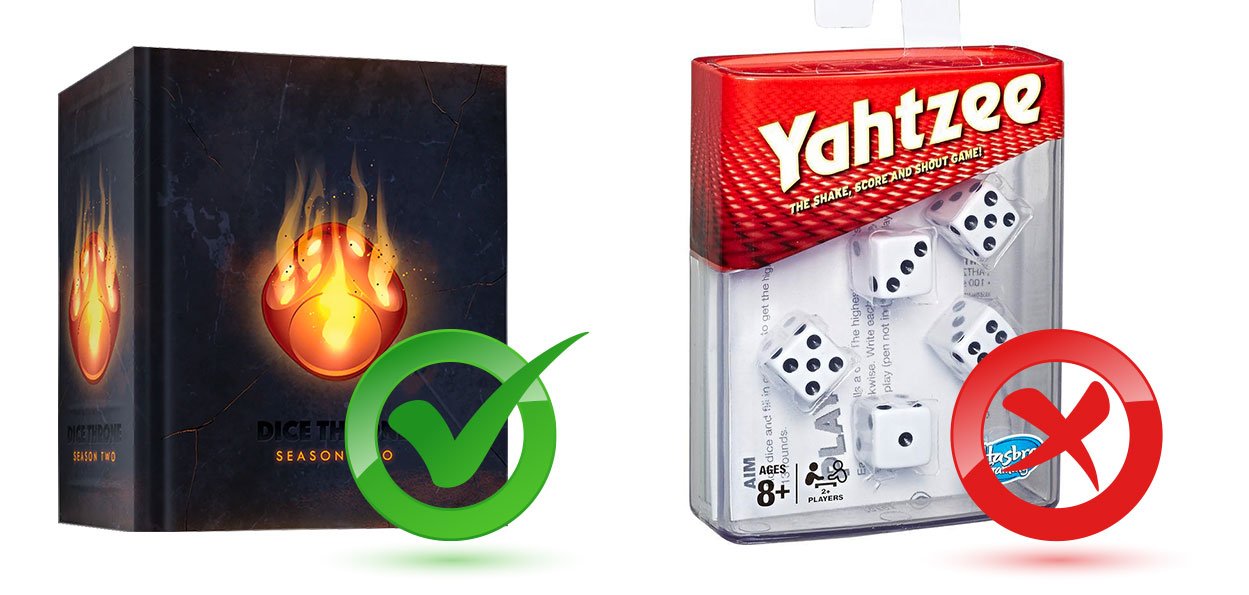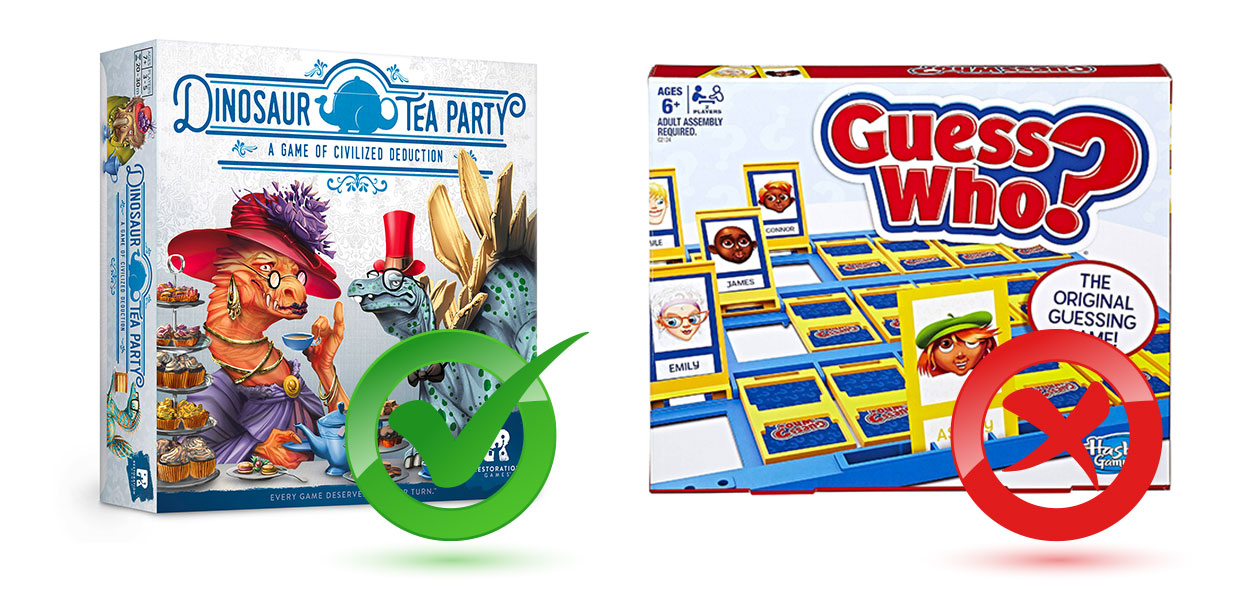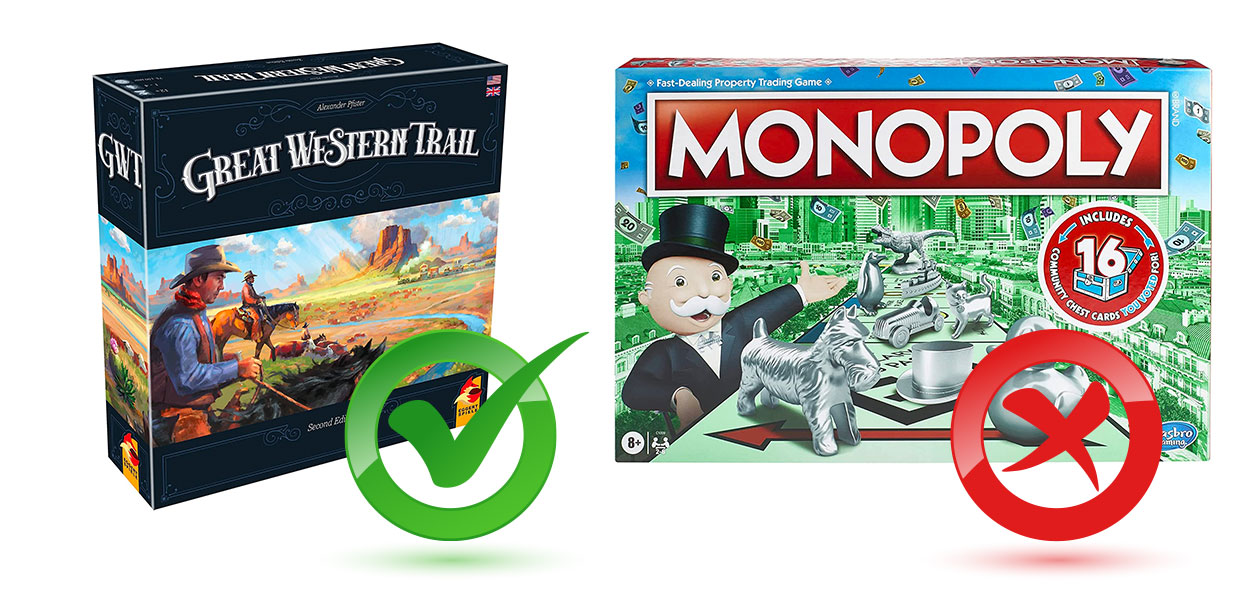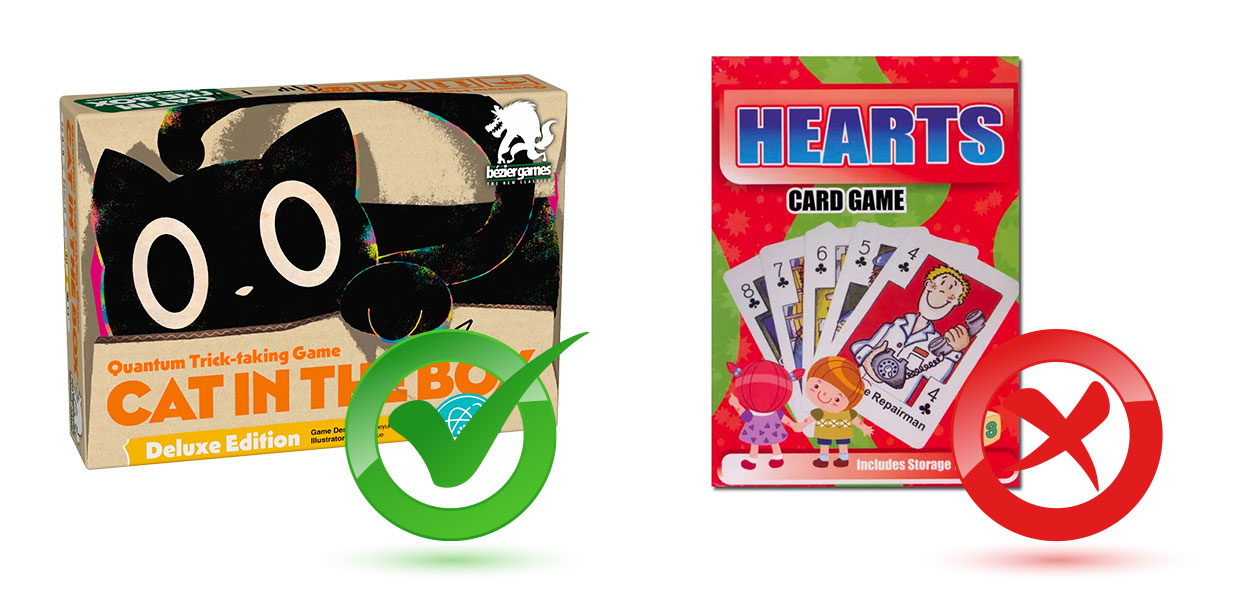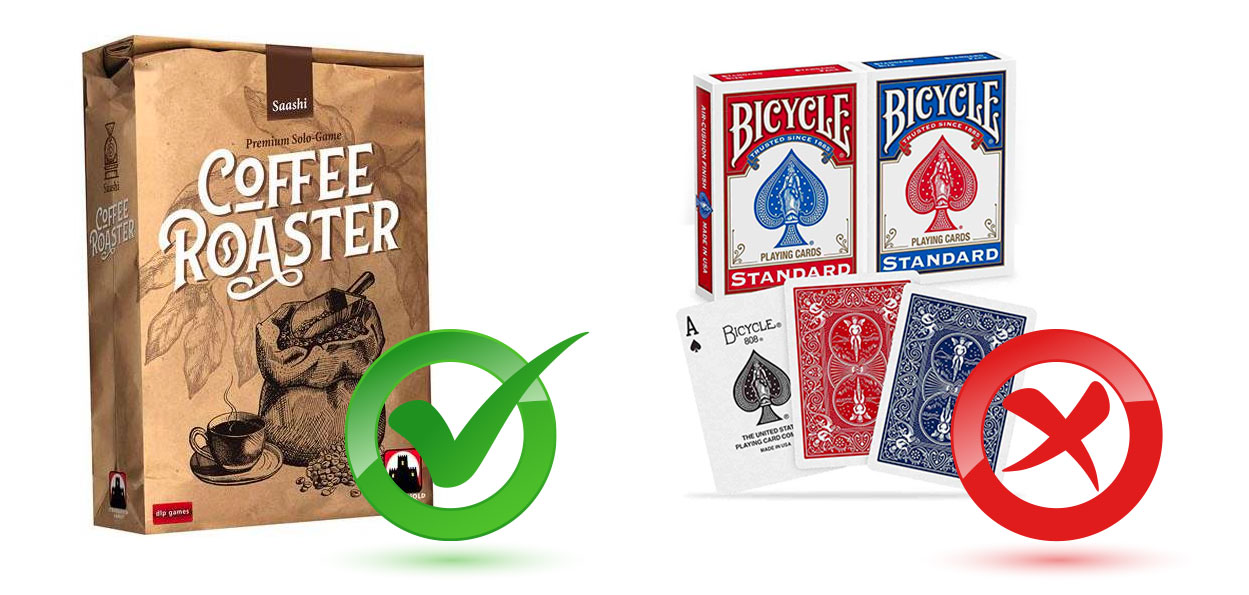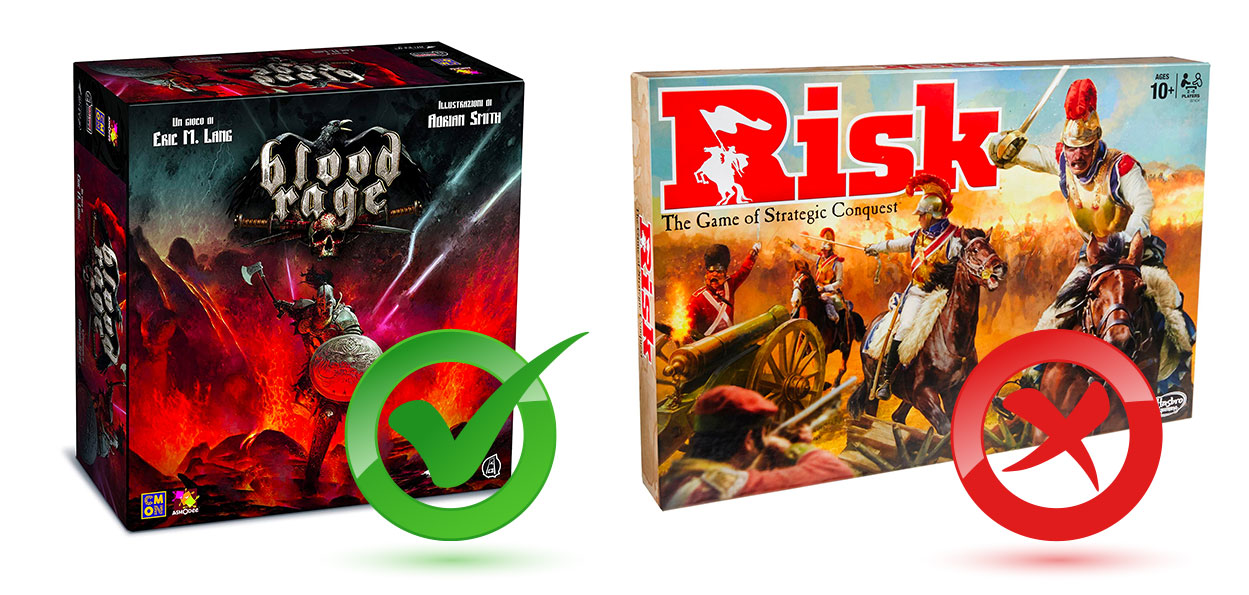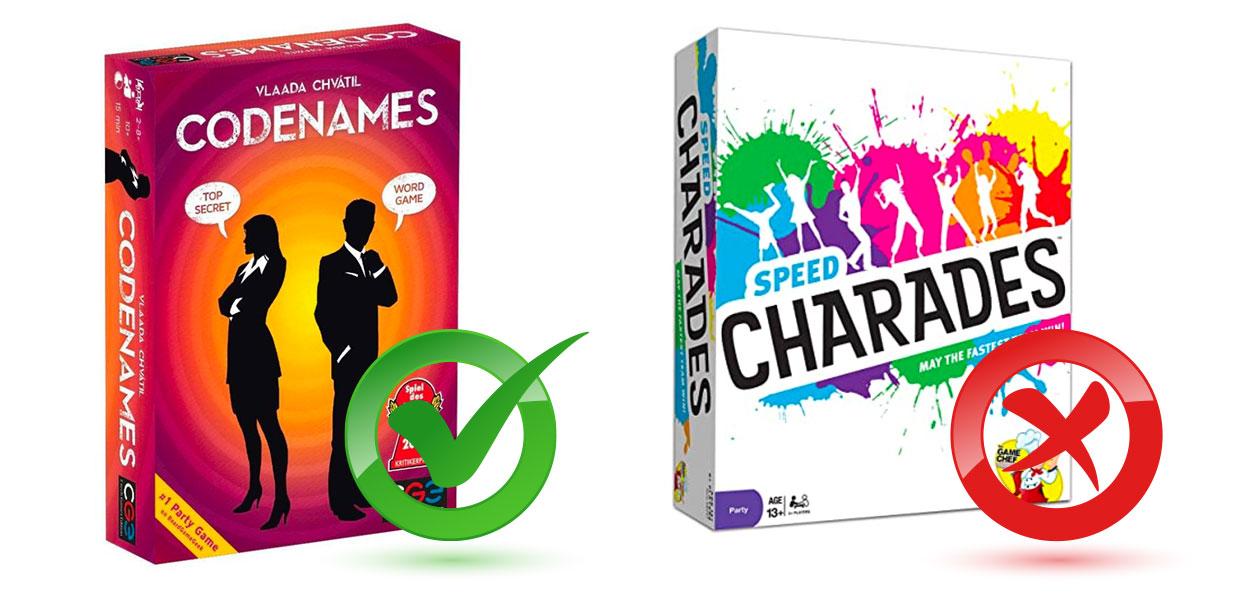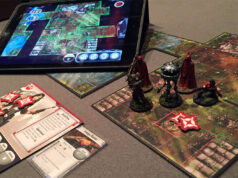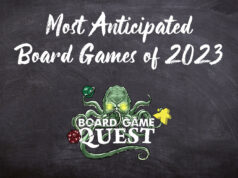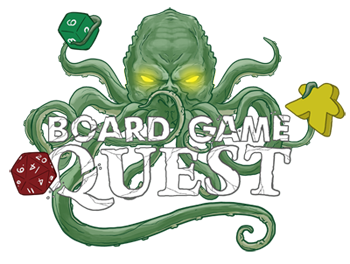It’s the holidays, a birthday event, or just a family gathering—everyone is sitting around, relaxing, letting the food digest and the drink course through the system. The television is on yet… no one is really watching. They seem bored. Mom shuffles to a closet and returns with Clue in her hand, asking others to join her at the table. You look around at your family members, all of them struggling to get up from the couch, or the chair, or the floor. They don’t question the gaming choice. They know no other options.
But you? You’re the board game hobbyist, or at least your knowledge of this realm far surpasses the collective lack of insight into better options. You’ve prepared this time though by bringing a new game for everyone to enjoy. Something that will blow their minds. The moment has come to show them that by returning to ancient classics, they’ve missed out on an opportunity to experience an evolution of gaming that they will talk about with their friends for days, maybe even weeks. You push the ragged copy of Clue off the table and replace it with the bright and shiny Mysterium. Everyone gasps. Grandma passes out, but that’s due to low blood sugar. You’ve done it, you’ve conjured a memorable moment and a new way forward for all. You’re a hero. Until everyone gets impatient waiting for you to teach the game and they all shuffle back to the couch/chair/floor to settle in for the evening.
Replacing old family classics can be a chore. We’re here to provide some exciting options that remove tired has-beens and may get your family to the table more often. Just remember to keep an eye on grandma because she’s really excited to play something new.
A Fake Artist Goes to New York instead of Pictionary
Chosen by Brandon:
There you are playing Pictionary again with the family. You’re stuck with Uncle Randy who lacks creativity and is drawing circles repeatedly around an object that looks like a cross between a sickly horse and a rabid dog. The other team watches on with grins and giggles. I’m finished with wondering what that animal is supposed to be. I’m moving on to A Fake Artist Goes To New York from Oink Games. This tiny box provides a new spin on the classic party drawing experience. Rather than splitting into teams, all but one player is secretly given a word to collaboratively contribute to on a central canvas. The fake artist is the player who receives a blank tile and has no idea what they are supposed to draw. As artistry unfolds around the table (each player gets to add a single uninterrupted line to contribute to the drawing), someone is trying to hide their role by attempting to blindly assist. This disconnect and hidden role twist creates a wholly invested group event and plenty of laughs and gasps. Don’t draw too well, as the fake artist will easily fit in or may be able to guess the word at the end, but don’t be too abstract as to be incorrectly selected as the fake. Even Uncle Randy can contribute by adding to a shared vision rather than make it up on his own. But why is he drawing that sickly horse again? Must be the fake artist, right?
5-10 Players • Ages 8+ • 20 minutes • $20
Lords of Vegas instead of Catan
Chosen by Spencer:
Look. I get it. Catan was one of my gateway games, too. The nostalgia for regular weekly plays that lasted for several years straight still hits hard. However, after my second or third play of Lords of Vegas, I was moving on to a brighter future. Catan has a distinct mixture of a few elements I love, namely rolling dice, building/expanding presence on a board, resource management, and trading/negotiating. Lords of Vegas has all of those, but it’s all been upgraded and jazzed out like a night in Vegas. You still get a somewhat random allocation of resources every round (in this case, lots to build on), you get to build your casinos to be both wide and tall, and you can roll dice to attempt to cement your ownership or to take over a casino you have a presence in. You’ll need money to do all these things, so hopefully, your casinos pay out. These payouts are based on cards instead of dice, so the odds are more predictable, and you can plan around it. Finally, you can trade anything except victory points. Not just wood for sheep. Trade money, building lots, casinos, and even actions. With Lords of Vegas, you get all the excitement of scheming and rolling dice to expand your empire that you get from Catan, but you’ll have more fun and more control over the outcome.
2-4 Players • Ages 12+ • 60-90 minutes 
Dice Throne instead of Yahtzee
Chosen by Tony:
Yahtzee has been around since 1956, so chances are you’ve already played this dice-chucking game. Sure, it’s a roll and write game, which are super chic right now. But that doesn’t mean someone hasn’t come along and made a better version in the past half a century. In fact, someone(s) has already. Designers Nate Chatellier and Manny Trembley brought us Dice Throne. This dueling game uses similar gameplay from Yahtzee, yet also adds on card play and unique character powers. Each player will control a thematic hero (and the new Marvel version adds familiar faces to use as well) with their own custom power board and deck. Each turn players will roll dice and use a combination of symbols and runs of numbers to activate powers off their board. Doing so lets them attack their opponent and inflict them with status effects. The player’s deck not only helps them mitigate bad dice rolls, but also upgrades their powers. If you like the dice rolling from Yahtzee but just wish it had more punch, check out Dice Throne!
2-6 Players • Ages 8+ • 20-40 minutes • $25
Dinosaur Tea Party instead of Guess Who
Chosen by James:
Guess Who has a very low barrier to entry as players take turns asking questions to guess who the other person is. But it’s only a two-player game and tends to overstay its welcome. Do you know what would also be an improvement along with a higher player count? Dinosaurs. Specifically, dinosaurs having tea. Dinosaur Tea Party takes the formula of guessing visual traits of people and adds dinosaurs and quirks. Quirks mean certain dinosaurs will always switch answers, or answer no, or lie… which adds an additional layer of complexity and challenge to the game. Or you can leave them out to let people get warmed up. If you make a correct guess about a feature you get to go again and if you guess which dinosaur someone is correctly you gain a sugar cube (it’s plastic) and that dinosaur leaves the party (flipping their card over). The first person to get three sugar cubes wins. The fun art and silly theme is also more engaging than rows of cartoon mugshots making Dinosaur Tea Party an easy sell to almost anyone without visual impairments.
3-5 Players • Ages 7+ • 15-30 minutes • $20
Great Western Trail instead of Monopoly
Chosen by Michelle:
The interesting thing about this comparison is that I’m looking at it from the overall gameplay mechanic perspective. Sure, you’re not trying to make the most money or buy the best property in Great Western Trail but at its core you are maneuvering about the game board, taking actions based on where you land and trying to make the most out of it. Some locations require a fee to move to, use, or pass through—like hazards or private buildings from other players. In this case, it can be beneficial for a player to see what the state of the board is and whether they can take advantage of specific actions on their buildings to entice others to use the action (and thus, collect fees). The biggest draw to me to move away from Monopoly is the ability to really control your fate. Movement can be improved by delivering cattle to stops past Kansas City and is not subject to a die roll. From there, the amount of money you make is based on the cattle card types in your hand and managing the expectations of the different train station stops at the end of the path before starting the journey again.
1-4 Players • Ages 12+ • 75-120 minutes • $50
Cat in the Box instead of Hearts/Spades
Chosen by Jacob
Everyone’s probably played a trick-taking game in their life, whether it be Hearts, Spades, Contact Bridge, Euchre (where my Midwesterner’s at?!), Durak (where my Russians at?!), or Whist (where my Phileas Foggs at?!). The concept is simple enough: usually played as a 4-player team game of 2v2, one player leads with a card of a particular suit (6 of clubs, say), and then other players must follow suit and, if they are attempting to win the trick— simply another name for “the round” or “this set of 4 cards”—they must either play a higher card of that suit, or in some cases, may play a card of the trump suit and win the trick that way. Cat in the Box takes this tried-and-true mechanic and turns it on its head. Leaning heavily into its theme, the game, in a nutshell, is “what if Schrodinger’s Cat, but a trick-taking game?” Those familiar with the concept of Schrodinger’s Cat will know that, while something remains unobserved, it exists in multiple states. A cat left alone with poison in a room is both alive and dead, until it is observed. Similarly, when you play a card, you observe it, therefore you dictate its color. Each card (a blue 6, for example) can only exist once, however, so once it’s been played, it’s marked on a central board. Without getting into much further detail, just trust me that hilarity and fun ensues after that. So, if you’re a fan of those classic trick-taking games, give Cat in the Box a try, and perhaps you’ll observe yourself having a great time.
2-5 Players • Ages 8+ • 20-40 minutes • $50
Coffee Roaster instead of Solitaire
Chosen by Matt:
If your old-fashioned family members cling too tightly to their ancient games of Clue and Monopoly, no problem. Find a quiet corner and set up a game you can play on your own. But don’t play the old standard 1-player time-waster, Solitaire. Bring along a copy of Coffee Roaster, by Japanese designer Saashi, for some relaxing solo gaming. Let’s face it, sometimes you’d rather not even play a game with your family. Avoid the glazed eyes while you teach, the constant rules questions, and the patented family bickering. Just fly solo. Coffee Roaster upgrades on the Solitaire experience by giving players a deeper puzzly challenge with a bit of theme. You’ll be drawing bean and flavor tokens out of a bag each round, roasting the beans just the right amount to make that perfect cup of coffee. Flavor tokens can mitigate bad draws by thinning the token pool and allowing redraws. You choose when to end the roasting process and do a taste test of your handcrafted coffee, drawing from the pool of tokens you’ve developed through careful planning. Each cup you brew has a target roast level to hit and you’ll need to have found the right balance of body, acidity, and aroma with the flavor tokens. It’s a calmly thinky game, has a strong theme, and comes with a compact playtime of 10-30 minutes. And best of all, you don’t have to get halfway through a game of Risk only for the rest of the family to bail out, angry that you built a stronghold around Greenland and drove them out of Western Europe.
1 Players • Ages 12+ • 10-30 minutes • $34
Blood Rage instead of Risk
Chosen by Jason:
In high school, I remembered a time when myself and four friends tried to play a game of Risk. We did not finish. But I loved the big sprawling board and the built-up battles that we waged upon each other. But it was always a shame that the game took so long. I mean it’s the reason that Kramer and Newman had to carry their board around on a subway, never mind the lack of trust. It felt so random and frustrating when your army of 20 was reduced to three by your opponent’s one Leonidas. Blood Rage is a game that can be a fantastic substitute. You build up your armies and draft cards to help you carve out a path to victory. You’ll recruit monsters and gods to help you gain glory in Valhalla. It’s a tighter board that gets smaller as the game goes on, forcing those of you who would otherwise like to camp out in Australia to get in the game. It makes battles feel interesting, and not left to the fate of the dice. Most importantly, the game moves along and is reasonable to finish in a much shorter play time. Throw in some cool miniatures and you have all you need to battle it out with your friends.
2-4 Players • Ages 12+ • 60-90 minutes • $89
CodeNames instead of Charades
Chosen by AnnaMaria:
Charades seems to be that one party game everyone has heard of and only one person actually likes and suggests. Let’s face it, it can be a little embarrassing to try and convey ‘Pink Elephants on Parade’ while the other team is laughing hysterically at your trunk impression….
CodeNames offers the same team experience with no misinterpreted physical expressions. Like Charades, one person will be in the hot seat while the rest of the team tries to provide an answer. But instead of attempting to elicit guesses via wild gesticulations, you’ll use a single word clue to help your team guess words out of a 5×5 tableau of word cards. The conversations reasoning out those guesses are often HYSTERICAL; it’s wild to see what kind of winding roads a group might take to associate lemon with broadsword. Easy explanation, tons of laughs, and better with numbers—CodeNames is a fantastic family or adult party game for almost everyone.
2-8 Players • Ages 10+ • 15 minutes • $15
Flamme Rouge instead of Mille Bornes
Chosen by Chris:
I played a ton of Mille Bornes growing up. Like… way more than any child should be forced to play. It was essentially my mother and father’s favorite “real” game; not a kid’s game like Monopoly or Clue, but an actual, bonafide game with some depth. Of course, Mille Bornes isn’t that, but at the time that’s how it was always presented. As a modern-day alternative that is an actual, bonafide game with some depth I recommend replacing Milles Bornes with Flamme Rouge, the bicycle racing game with variable tracks and different modes of play. It has some elements in common with my parents’ old standard like hand management and blocking other competitor’s path, but without all the frustrating take that. It’s a wonderful racing game that is easy to teach and feels like an actual race as you carefully burn through your cards to maximize their effectiveness. I was even able to teach it to my Milles Bornes-loving father and he really enjoyed it. He’ll never openly admit it’s better than his favorite game, but at least he’s now aware that there’s an alternative out there for him. Baby steps, Dear Readers. Baby steps.
2-4 Players • Ages 8+ • 30-45 minutes • $35



